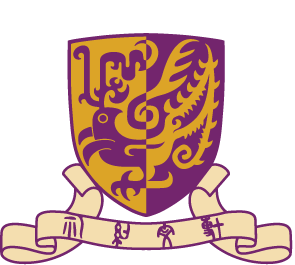
 | 89th Congregation (2020)Professor Sir Steve Murray SMITHDoctor of Laws |
Professor Sir Steve Murray Smith was born in 1952 in Norwich, England. His parents were from working class backgrounds, and he attended the City of Norwich School. It was a grammar school – a member of the most academically focused stream of England’s selective state schooling system. In principle that system was intended to find talented children, whatever their origins, through a country-wide exam known as the 11-plus and offer them an education reflecting their potential. Winning a place at a grammar school was an achievement. But at a parents’ evening, his form master told his parents that ‘people like you don’t go to university’. They should find a suitably low-skilled job for their son – perhaps sweeping the floor in a nearby shoe factory.
Schools can of course be wrong – and famously so. But their career guidance can seldom have been much more wrong than Steve Smith’s form master’s conclusions were that evening. Fortunately, another teacher had a different opinion: he told Smith that if he stopped mucking around in class he could really go somewhere. ‘…That made all the difference,’ Smith reports. ‘Someone, somewhere, has to put faith in you to go forward.’
Many factors affect potential students’ decisions about choosing to go to a university, but their schools’ advice and assessments carry a lot of weight. Faced with deeply negative judgements from a school teacher, even if another is encouraging, what might a pupil do? Steve Smith took the high road. Not only did he go on to show that his form teacher’s judgement was entirely off the mark, but in showing it he became one of the primary architects developing both the policy and operations of an entire system that he had been assured would have no interest in him.
He started by winning an undergraduate place to study Politics and International Relations at the University of Southampton. A Bachelor’s degree there was followed by a Master’s and then a PhD. Before his doctorate had been awarded he was already a Lecturer in Politics at Huddersfield, whence he moved back to Norwich to join the University of East Anglia (UEA). UEA was one of Britain’s new universities, set up in the 1960s. Its star was in the ascendant. It was centred around a splendid, 17th century house, Earlham Hall (as so often, reserved for the administration) but was famous for its contemporary architecture: the brutalist ‘teaching wall’ and ‘ziggurats’ that were its primary structures made an instant impression.
He was there throughout the 80s. By then, UEA was widely celebrated not only for its iconic, original buildings, but also for its extraordinarily influential creative writing programme and for its Sainsbury Centre for Visual Arts – one of Norman Foster’s first major public buildings, housing a spectacular collection. This was something of a purple patch for Steve Smith, too – his name adorns the spine of nine books that came out during his time there. His academic career was flourishing just as clearly as his university was – but his time at UEA was coming to an end.
In the early 1990s, he moved to the University of Wales, Aberystwyth – another celebrated campus, famous for its landscape design and its 1960s plantings by Brenda Colvin, of which much is now lost and the remainder controversially threatened. Aberystwyth is also home to what is claimed to be the oldest department of International Politics in the world, established shortly after World War I in the hope that by increasing our understanding of international politics we might prevent such conflicts occurring in the future. We should all have a dream...
In Steve Smith’s ten years there another four books appeared – the last of them being The Globalization of World Politics – a veritable blockbuster, edited jointly with John Baylis and Patricia Owens, currently in its 8th edition with over 600,000 copies sold. At the same time Smith transformed Aberystwyth’s department of international politics, taking it from a grade three in the research assessment exercise to a five, and then a five-star in 2001. His activities in Aberystwyth also signalled a shift in emphasis from a subject or departmentally specific focus to a wider, university perspective, as Senior Pro-Vice-Chancellor for Academic Affairs and, in due course, to what became a national and international portfolio whose significance rapidly expanded when, in 2002, he moved to the University of Exeter as its 6th Vice-Chancellor.
Exeter is an ancient city by British standards – a Roman legionary fort that became a town. It is the County Town of Devonshire and a cathedral city, whose cathedral library contains one of the great literary treasures of the kingdom, Codex Exoniensis, the Exeter Book, donated to the cathedral in 1072. It is the largest collection of Old English literature that still exists, but it remained an essentially unnoticed hidden treasure for three quarters of a millennium.
The Bishops of Exeter were undoubted grandees, and some took an active interest in education, but they distributed their largesse elsewhere: Bishop Stapledon founded Exeter College, Oxford and Bishop Grandisson endowed a Collegiate Foundation at nearby Ottery St Mary. Exeter’s own university evolved largely from Exeter’s Schools of Art and Science, founded in the mid 19th century. It became a full-fledged university in 1955 – not long before CUHK.
Shortly before Steve Smith arrived, Exeter had been criticised along with several other UK universities for its exclusivity – primarily, for its low proportion of state school pupils. At his interview for the Vice-Chancellor’s post, Smith presented a ‘forensic’ analysis of the current state of the university, and a clear view of where it needed to get to. Eighteen years later, Exeter is very different. It has close to doubled its student numbers, and greatly increased its number of international students; it has pushed into the STEM subjects; and it has steadily moved up the ranking tables. To this end it has radically extended its campuses, and the accommodation that it is able to offer its students: full disclosure, my own younger son was an Exeter student at one of these – their Penryn campus in Cornwall, which opened in 2004.
Exeter has not simply worked to attract overseas students; it has also gone out of its way to forge international partnerships at the institutional level. Its partnership with CUHK, setting up a Joint Centre for Environmental Sustainability and Resilience here in Hong Kong, is an illustration of this outlook. Collaboration is key for the management of climate change, and Exeter has made itself into one of the places with which to collaborate.
At the same time as changing his own university, Steve Smith has also been deeply engaged in the operations of the university system within which it is embedded. These activities might appear to compete for time or attention, but in truth they are interlinked. What happens within a university is of course substantially determined by the context within which it operates, from the schools whose pupils need to be encouraged and inspired, to the admissions system through which those pupils apply, to the structures, resources, attitudes and policies of the university sector itself. In highlighting just a few of the organisations to which he has contributed, I would like to pick out the Prime Minister’s National Council of Excellence in Education, which advised the UK Government on how to achieve world-class education performance for all children and young people; his spell as President of Universities UK, representing the collective universities of the whole kingdom; and his Chairing of the Board of Trustees for the Universities and Colleges Admissions Service, which oversees admissions for the entire UK public university system – and at the same time plays a key role in advising and encouraging potential applicants. These are contributions which, over the years, have changed the entire system.
Steve Smith’s contributions have been recognised with honorary degrees and awards both nationally and internationally, too numerous to list. But I cannot let pass unremarked the Susan Strange Award of the International Studies Association for the person who has most challenged the received wisdom in the profession: truly a prize to cherish! He is a Fellow of the Royal Society of Arts, and of the Academy of Social Sciences, and he became Sir Steve Smith in the Queen’s Birthday Honours List in 2011.
He stood down from his Vice-Chancellorship in September 2020. His successor has already been announced. At this most difficult and challenging time for universities everywhere he should surely be both proud and content to have passed on an institution in the best possible condition to weather the storm: the new Vice-Chancellor is a lucky woman!
You might reasonably suppose that, after all this, a quiet retirement beckons. But you would misjudge the man – and, as I am sure he will wisely have concluded, retirement is in any case a dangerous lifestyle to adopt. He will move to a new role as the UK’s new International Education Champion. Education really is something that should be available for everybody. He has come a very long way from parents’ evening at the City of Norwich School, and an awful lot of people have reason to be grateful.
Mr Chairman, it is my privilege to present to you Professor Sir Steve Murray Smith for the award of Doctor of Laws, honoris causa.
This citation is written by Professor Nicholas Rawlins




